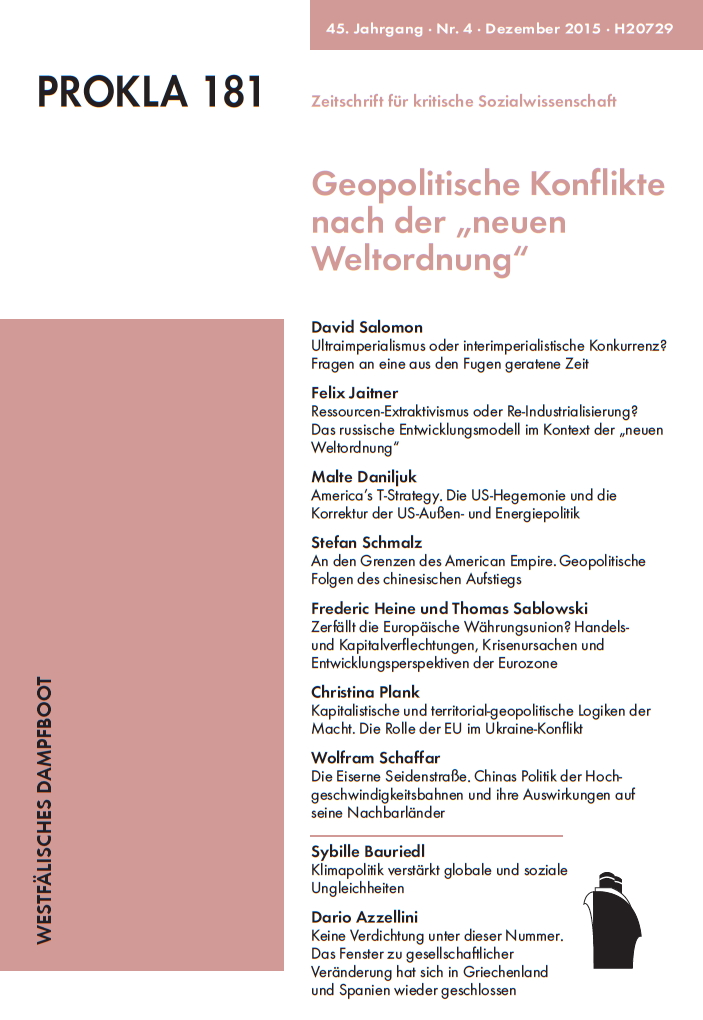America’s T-Strategy
Die US-Hegemonie und die Korrektur der US-Außen- und Energiepolitik
DOI:
https://doi.org/10.32387/prokla.v45i181.199Keywords:
USA, Hegemonie, Geopolitik, Energiepolitik, AußenpolitikAbstract
The recent escalation of conflicts in the periphery of the European Union and the changes in transatlantic foreign policy can be understood partially as the result of a reorganization of the global energy policy. After the financial crisis of 2008, the new US administration pursued a strategy of lowering the energy costs. The necessary surpluses were created by new production technologies of oil and natural gas (fracking). Part of this successful strategy was a partial military withdrawal from conflict regions and a reduction of the direct involvement in the Greater Middle East. Starting from a highly productive heartland, the American Empire opens up world markets and secures global trade routes. The Transatlantic and Transpacific Free Trade Agreements (TTIP and TPP) are supposed to trigger a new economic stimulus with North America at its center: America’s T-Strategy. Analyzing the development of energy policies and foreign policy discussions within elite networks, the article argues that this strategy is directed mainly against the rising powers Russia and China.






